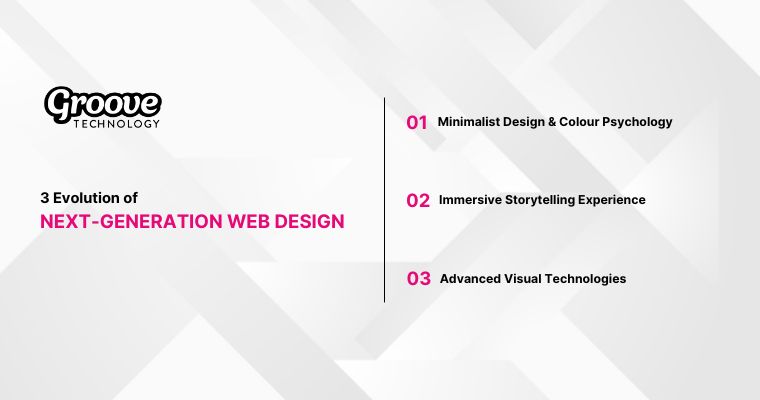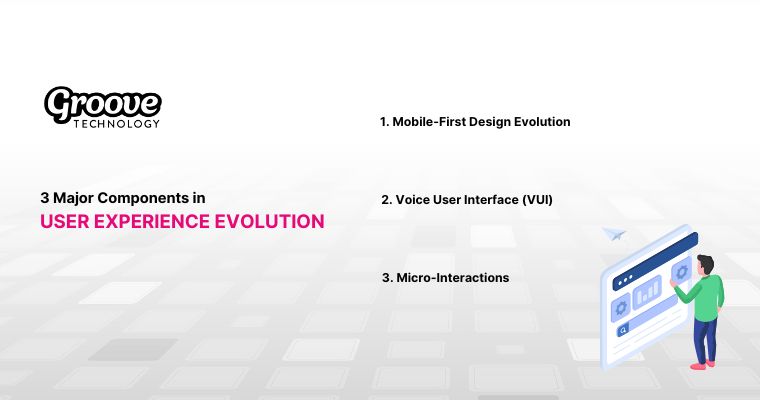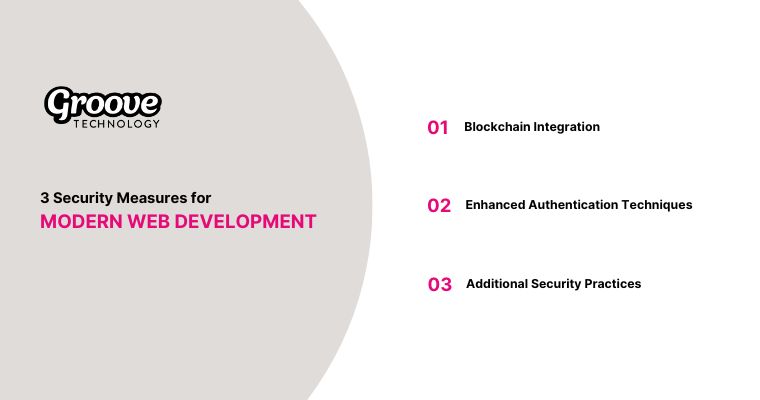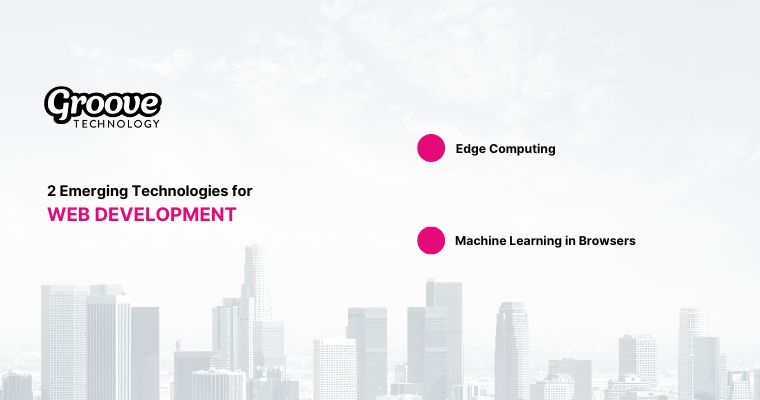Web Development Trends in 2025: What Developers Need to Know
Web development trends in 2025 will reshape the digital ecosystem, creating a breakthrough shift in the way websites are built and designed. Innovative technologies such as artificial intelligence (AI), Progressive Web Applications (PWA) and blockchain play a fundamental role in shaping the future of the industry.
The new generation of web architecture prioritizes minimalism, focuses on multi-dimensional interactive experiences and applies advanced imaging technology. Optimizing performance and page load speed becomes a key factor, promoting the adoption of serverless architecture and edge computing.
According to Gartner research, by 2025, 70% of customer interactions will integrate augmented reality (AR) and virtual reality (VR) technology. In parallel, Dev.to recorded that 30% of developers plan to integrate blockchain to enhance security and transparency in web applications.
This article will take a deep dive into key trends, from the evolution of web design, innovation in platform technology, optimizing user experience to advanced security solutions. We will also discuss how Groove Technology supports businesses in the digital transformation process, along with strategies to prepare for the future of web development.
Let's explore each trend in detail and how they will impact the way we build the web in the future. By embracing these trends, your business will maintain a competitive advantage in the ever-evolving digital landscape.

Next-Generation Web Design Evolution
Exploring the future of web design through innovation, simplicity, and immersive user experiences.

1. Minimalist Design & Colour Psychology
Web design trends are gravitating towards streamlined, minimalist aesthetics. This shift prioritises user-centric layouts with abundant white spaces, clean fonts, and structured alignment. These elements optimise content interaction, improve readability, and significantly enhance page load times, critical for SEO and retention.
Minimalism does not equate to dullness. Colour psychology remains integral, strategically using accent colours and contrasts to direct attention to calls-to-action and key details. For instance, red can create urgency, blue conveys trust, and green fosters harmony. Below is a succinct guide:
| Colour | Emotional Response | Web Application |
| Red | Excitement, Urgency | Purchase Buttons, Alerts |
| Blue | Trust, Calm | Corporate, Financial Services |
| Green | Balance, Health | Eco-Products, Financial Well-being |
| Orange | Action, Creativity | Discounts, CTAs |
Marrying minimalistic design with deliberate colour use strengthens usability, lowers bounce rates, and extends on-page engagement; essential metrics in search ranking algorithms.
2. Immersive Storytelling Experience
Storytelling in digital platforms has evolved into an art of combining text, visuals, and interactivity. Immersive storytelling enhances emotional resonance and fosters retention by guiding users through narratives, making it indispensable for product launches and service explanations.
Key techniques include:
- Parallax Scrolling: Introduces dynamic depth during user interaction.
- Cinemagraphs: Combines motion and still imagery for subtle yet captivating effects.
- Sequential Animations: Leads users through intuitive step-by-step processes.
Case Study: An e-commerce brand transformed engagement by implementing narrative-driven designs. Features like interactive slides and animated infographics boosted conversions and dwell time by 30%.
3. Advanced Visual Technologies
Emerging tools like WebGL, Three.js, and Babylon.js are democratising the inclusion of 3D and interactive graphics in websites. As these technologies mature, they enable developers to integrate virtual reality (VR) and augmented reality (AR), revolutionising user interaction.
- 3D Graphics & Animations: Enhances product showcases with real-time interactions and dynamic infographics.
- AR/VR Integration: Sectors like retail and education use AR for immersive previews, such as virtual product placement in real-world settings. Gartner predicts 70% of customer interactions will incorporate AR/VR by 2025.
These interactive elements improve session duration and decrease bounce rates but must balance media-rich designs with optimised performance to meet Google’s Core Web Vitals. Techniques like caching, lazy loading, and responsive design are vital for ensuring speed and accessibility.
This approach exemplifies a fusion of innovation with user-first strategies, maintaining both technical excellence and business relevance.
Core Technology Innovations
Web development in 2025 is shaped by transformative technologies, prioritising scalability, efficiency, and seamless user interaction. Key innovations, including AI-enhanced development, Progressive Web Applications (PWAs), and serverless architecture, drive businesses towards robust digital solutions.

1. AI-Powered Development
Artificial Intelligence (AI) reshapes web development by automating complex workflows, enhancing personalisation, and streamlining analytics. Tools like GitHub Copilot and GPT-based coding assistants exemplify AI's role in elevating productivity.
Key Applications:
- Low-Code/No-Code Platforms: Empower non-technical users through tools like Webflow or Bubble to create feature-rich apps, minimising resource dependencies and reducing costs.
- Personalisation Engines: AI analyses browsing behaviours to recommend tailored content, enhancing engagement and conversion.
SEO Implications:
- Improved Behavioural Metrics: Relevant, personalised content boosts session duration and lowers bounce rates.
- Targeted Keyword Insights: AI identifies emerging trends and long-tail keyword opportunities, enhancing optimisation strategies.
2. Progressive Web Applications (PWAs)
PWAs merge web functionality with app-like experiences, enabling faster interactions and offline accessibility, all without requiring app store installations.
Core Advantages:
- Offline Functionality: Cached content ensures uninterrupted access.
- Enhanced Engagement: Features like push notifications increase user retention.
- SEO Benefits: Reduced load times and improved interaction metrics strengthen search rankings.
3. Serverless Architecture
Serverless technology minimises infrastructure management, allowing developers to focus solely on application logic. Platforms like AWS Lambda and Azure Functions enable scalable, cost-effective solutions.
Benefits:
- Cost-Efficiency: Charges apply only for execution, eliminating idle server expenses.
- Scalability: Dynamically adjusts to traffic demands.
- Rapid Deployment: Accelerates delivery cycles through CI/CD pipelines.
Challenges:
- Vendor dependencies may hinder flexibility.
- Managing multiple microservices can require specialised expertise.
Significance for 2025 Trends: Serverless models foster resilience, supporting diverse traffic patterns and enabling rapid innovation cycles.
User Experience Enhancement
One of the cornerstones of web development trends 2025 revolves around providing a seamless, intuitive user experience (UX). As technology continues to advance, users expect lightning-fast load times, simplified interfaces, and engaging interactions that feel natural and effortless. Three major components stand out in UX evolution: mobile-first design, voice user interfaces (VUI), and micro-interactions

1. Mobile-First Design Evolution
Mobile devices have been dominating global internet usage for years, and this trend will only accelerate by 2025. As developers and designers, it’s no longer enough to retrofit desktop layouts to smaller screens. Instead, the best practice is to start with the mobile interface as the primary design focus, then scale upwards for larger displays.
- Responsive Beyond Screens
- Adaptive Layouts: Go beyond simple scaling; ensure that content reorganizes itself effectively depending on the device orientation (portrait vs. landscape), screen size, and even foldable
- Gesture-First Navigation: Swipes, pinches, and taps are intuitive on small devices and can replace or supplement traditional clicks and scrolls.
- Performance & Speed
- Lightweight Assets: Optimize images, scripts, and stylesheets to reduce load times on potentially slower mobile networks.
- Critical Rendering Path: Prioritize the essential parts of the page to load first, ensuring the user can interact with your site as quickly as possible.
Why does it matter for SEO?
Google prioritizes mobile versions of websites when evaluating ranking factors. Thus, optimizing for mobile load speed and responsive design directly influences search visibility.
2. Voice User Interface (VUI)
Devices like Amazon Echo, Google Home, and smartphone assistants such as Siri and Google Assistant have transformed the way users interact with technology. By 2025, it’s expected that voice searches will comprise a significant portion of online queries.
- Natural Language Processing (NLP): Modern VUI relies on advanced AI to interpret user queries in a conversational manner. This means developers and content creators need to optimize for long-tail, spoken queries rather than short, keyword-based text searches.
- Accessibility & Inclusivity:
- Voice commands offer a more inclusive approach for users with disabilities or anyone who prefers hands-free operation.
- Incorporating voice technology into websites can expand your audience and provide a unique differentiator i:n competitive markets.
- SEO Implications
- Question-Based Queries: People often use questions like “How to,” “What is,” or “Where can I find…” when speaking.
- Featured Snippets: Structuring content so that it can be easily identified and read aloud by search engines (using clear headings, lists, FAQs) can lead to featured snippet
Quote: “Designing for voice is fundamentally different than designing for a visual or tactile experience—you must consider pace, tone, and context in entirely new ways.” – Sarah Nguyen, VUI UX Specialist
3. Micro-Interactions
While large-scale animations or dramatic design elements may grab headlines, micro-interactions are the subtle yet powerful touches that make a website feel polished and responsive. These tiny design elements signal feedback, guide users through the interface, and delight them in small but meaningful ways.
- Examples of Micro-Interactions
- Button Hover Effects: Slight color shifts or tooltips when hovering over a button.
- Loading Animations: Spinners or progress bars that reassure users the system is still working.
- Confirmation Feedback: Small checkmark animations when forms are successfully submitted.
- Best Practices
- Keep It Simple: Micro-interactions should be subtle and intuitive, not distracting or overwhelming.
- Focus on Utility: Each micro-interaction should serve a clear purpose, like indicating progress or errors.
- Maintain Consistency: Use a coherent design language so that micro-interactions complement the larger site aesthetic.
Impact on User Retention: Studies suggest that micro-interactions can enhance user satisfaction by making the interface feel alive and friendly. This emotional connection often translates to more frequent visits, improved time-on-page, and better user reviews or ratings.
Advanced Security & Privacy
Cybersecurity threats continue to evolve, demanding a proactive approach to securing web assets. With the surge in sensitive data transactions, robust security measures have become non-negotiable for modern web development. Incorporating blockchain, multi-factor authentication (MFA), and other advanced strategies can protect user data while building trust and compliance.

1. Blockchain Integration
Blockchain extends beyond cryptocurrency to applications in healthcare, logistics, and content management. It ensures transparent, tamper-proof data handling, vital for sectors requiring verifiable records.
Decentralized Security Benefits:
- Resilience: Distributed data storage eliminates single points of failure.
- Immutability: Records, once added, cannot be altered without leaving a trace, safeguarding data integrity.
Applications for Web Development:
- Supply Chain Verification: Authenticate product origins, like pharmaceuticals, through documented blockchain trails.
- Smart Contracts: Automate agreements (e.g., digital rights, payments) triggered by predefined conditions, enhancing efficiency.
Fact: A Dev.to study reports 30% of developers aim to adopt blockchain by 2025 for enhanced security and transparency.
Challenges:
- Scalability Issues: Public blockchains face latency during peak transactions.
- Complexity: Deployment requires specialised expertise and financial investment.
2. Enhanced Authentication Techniques
As phishing and brute-force attacks escalate, traditional passwords alone are insufficient. Advanced methods such as biometrics, MFA, and AI-driven fraud detection enhance user safety.
Biometric Solutions:
- Fingerprint & Facial Recognition: Integrated into devices for secure, seamless access.
- Voice Recognition: Emerging as an alternative with growing voice-based interaction.
Multi-Factor Authentication (MFA):
- 2FA: Combines a password with a secondary device code for reinforced security.
- Hardware Tokens: Devices like YubiKeys safeguard sensitive operations offline.
AI-Powered Fraud Detection:
- Behavioural Analytics: Flags anomalies in login times or typing patterns.
- Automated Action: Enforces security by locking accounts during suspected breaches.
Quote: “Seamless yet secure authentication is pivotal in safeguarding digital platforms,” Mark Spencer, Cybersecurity Analyst.
3. Additional Security Practices
Key practices complement blockchain and MFA for a comprehensive security framework:
- HTTPS & TLS Protocols: Secure end-to-end encryption to avoid browser warnings.
- Web Application Firewalls (WAFs): Shield applications from malicious traffic.
- Automated Security Tools: Systems like OWASP ZAP and Nessus detect vulnerabilities such as XSS and SQL injection.
| Vulnerability | Description | Countermeasure |
| SQL Injection | Exploits database queries to manipulate data | Parameterized queries, input validation |
| Cross-Site Scripting | Injects harmful scripts into web pages | Encode inputs, implement CSP |
| Broken Access Control | Grants unintended data access | Role-based access, session management |
| Insecure Deserialization | Tampering with serialized data | Validate inputs, apply signing |
By adopting a layered security strategy, organisations can remain resilient against evolving threats. Up next: a dive into edge computing and in-browser machine learning technologies shaping 2025 trends.
Emerging Technologies
Web development continues to evolve with groundbreaking technologies shaping the future of user experience and performance. Among these, edge computing and in-browser machine learning stand out as transformative trends for scalability, efficiency, and personalisation.

1. Edge Computing
Edge computing decentralises data processing by bringing it closer to the user, reducing reliance on centralised servers. This architecture minimises latency, enhances real-time capabilities, and improves fault tolerance.
- Latency Minimisation
- User Proximity: Servers placed near users ensure faster data transfer.
- Real-Time Interaction: Ideal for IoT networks, live-streaming, and gaming platforms requiring instant feedback.
- Enhanced Reliability
- Distributed Systems: By leveraging multiple nodes, edge computing ensures higher uptime.
- Dynamic Allocation: Resources adjust to demand, optimising local workloads.
Case Study: Netflix utilises content delivery networks (CDNs) to cache media closer to users, ensuring seamless streaming. By 2025, Gartner predicts over half of enterprises will adopt edge computing for superior service delivery.
- Challenges
- Complex Infrastructure: Adopting edge computing requires technical investments and specialised expertise.
- Data Synchronisation: Maintaining consistency across nodes necessitates robust mechanisms.
2. Machine Learning in Browsers
Browser-based machine learning leverages technologies like WebAssembly (Wasm) and advanced JavaScript frameworks, making localised computation viable and secure.
- Privacy and Security
- Local Processing: Tasks such as image recognition or text analysis occur on devices, enhancing user privacy.
- Secure Predictions: Sensitive data remains confined to user environments.
- Improved Experience
- Instant Analysis: Real-time processing enables dynamic content adjustments.
- Tailored Solutions: Platforms personalise product recommendations based on live user behaviour.
- Tools and Frameworks
- js: Enables training and deploying ML models within browsers.
- ONNX Runtime Web: Supports accelerated inference via Wasm and WebGL.
How to Prepare for These Web Development Trends
Adapting to web development trends in 2025 demands strategic foresight and continuous skill enhancement. Whether you’re a freelance coder, a startup innovator, or leading a major engineering team, these approaches will empower you to harness the evolving landscape.
1. Upskill and Build Expertise
- Engage in Online Learning: Platforms like Coursera, Udemy, and edX offer structured courses in artificial intelligence, blockchain integration, and serverless computing. Obtain globally recognised certifications such as AWS Cloud Practitioner, Azure Fundamentals, or CISSP for security excellence.
- Network Within Tech Communities: Collaborate on forums, Slack workspaces, or Discord channels dedicated to frameworks like React, Next.js, and TensorFlow.js. Attend meetups, hackathons, or conferences for peer learning and trend insights.
- Promote Lifelong Learning: Dedicate time weekly to exploring emerging libraries, tools, and design methodologies. Foster team knowledge-sharing through structured lightning talks or informal brown-bag discussions.
“Professional growth is deliberate and perpetual, ensuring teams remain agile and competitive.” — David Kruger, CTO, InnovateX
2. Optimise Resources Effectively
- Leverage Cutting-Edge Tools: Evaluate open-source software for its adaptability and community support, while considering proprietary solutions for premium services like customer support. Invest in design, deployment, and analytics tools to streamline workflows.
- Prepare for Infrastructure Demands: Adopt cost-effective serverless and edge computing solutions, weighing their scalability against management complexity. For AI and machine learning, explore GPU-enabled cloud platforms to accelerate processing.
- Budget for Uncertainties: Allocate contingency funds for pivots necessitated by shifting trends. Safeguard projects with automated security checks and robust backup protocols to minimise disruptions.
3. Prototype and Iterate Intelligently
- Adopt a Gradual Rollout: Test innovations such as WebAssembly or blockchain in pilot projects. Validate assumptions with real-world feedback to refine implementations.
- Focus on MVP Development: Use lean methodologies to release Minimum Viable Products (MVPs) that showcase core functionalities. Adapt rapidly to user feedback and evolving needs.
- Track Performance Metrics: From day one, monitor load speeds, error frequencies, and bounce rates. Utilise tools like Google Analytics or Mixpanel to derive actionable user insights.
By aligning skills, resources, and experimentation with emerging trends, you can confidently advance in the dynamic field of web development.

How Can Groove Technology Help You Stay Ahead of These Trends in 2025?
Groove Technology has strategically positioned itself at the intersection of innovation and practical implementation, offering comprehensive web development services that align with 2025's transformative trends. Our approach combines three essential elements for project success:
- Seamless Technology Integration
- AI-powered development solutions
- Progressive Web Applications (PWAs)
- Advanced security with blockchain integration
- Edge computing and serverless architecture expertise
- Efficient Project Delivery
- Transparent cost structure with no hidden fees
- Rapid onboarding aligned with your existing processes
- Flexible engagement models (Staff Augmentation & Dedicated Teams)
- Clear communication and project milestones
- Quality Assurance & Expertise
- Certified development teams with continuous training
- Rigorous testing and quality control processes
- Long-term partnership focus
- Comprehensive service coverage from Full Stack to UI/UX
Partner with Groove Technology to transform your digital presence while ensuring cost-effectiveness, transparency, and project success. Our expertise in emerging technologies, combined with our proven delivery model, helps you stay competitive in the rapidly evolving digital landscape.

Frequently Asked Questions (FAQs)
What are the critical web development trends for startups in 2025?
Focus on integrating AI-driven solutions, implementing Progressive Web Apps (PWAs), and prioritising mobile-first strategies. These areas enable scalability, boost performance, and elevate user experience while aligning with industry advancements.
How do these trends affect search engine optimisation (SEO)?
Enhancements like faster site loading, serverless frameworks, and machine learning-based customisation improve engagement metrics such as bounce rates and dwell times. Such signals strengthen a website’s ranking potential.
Will PWAs replace native apps by 2025?
While PWAs provide benefits like offline functionality, push notifications, and simpler updates, applications requiring intensive hardware utilisation or niche integrations may retain their native format.
What steps can ease the transition to serverless architecture for traditional hosting users?
Start small. Deploy standalone functionalities such as form handling or image optimisation using tools like AWS Lambda or Azure Functions. Gradual adaptation builds expertise while mitigating risk.
- Can blockchain be applied to standard e-commerce websites?
Yes, especially for applications like supply chain traceability or smart contract-based checkouts. However, ensure proper feasibility analysis and engage skilled developers for robust implementation.
Is accessibility limited to supporting screen readers?
Accessibility extends beyond screen readers. It encompasses inclusive practices like video captions, intuitive navigation, and contrasting design elements, accommodating varied user needs such as cognitive or auditory challenges.
Conclusion
Web development in 2025 will be defined by transformative technologies including AI-powered development, Progressive Web Applications, and advanced security measures. These innovations emphasise user experience through minimalist design, immersive storytelling, and mobile-first approaches. The integration of edge computing and machine learning in browsers will further revolutionise how websites perform and interact with users.
Groove Technology stands ready to help businesses navigate these emerging trends with our comprehensive development services. Our expertise in seamless technology integration, efficient project delivery, and quality assurance positions us as an ideal partner for your digital transformation journey. By combining innovative solutions with transparent cost structures and certified development teams, we ensure your web development projects remain competitive and future-ready.





